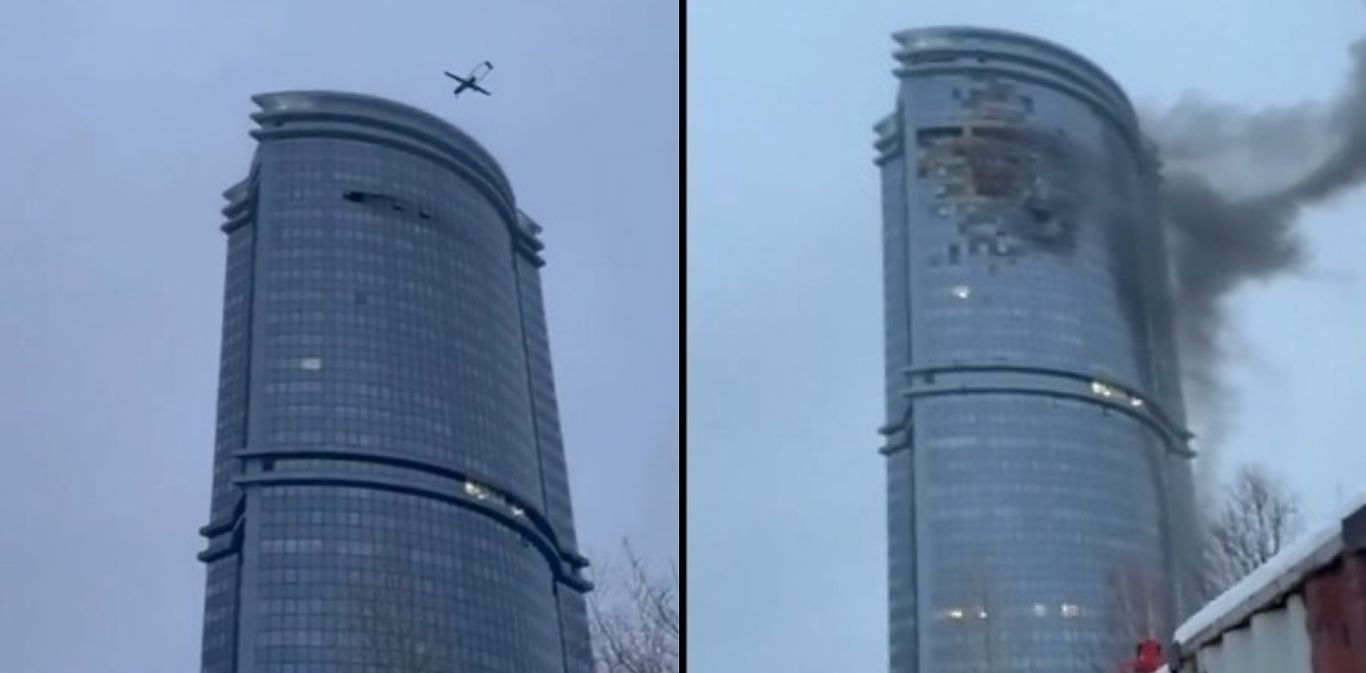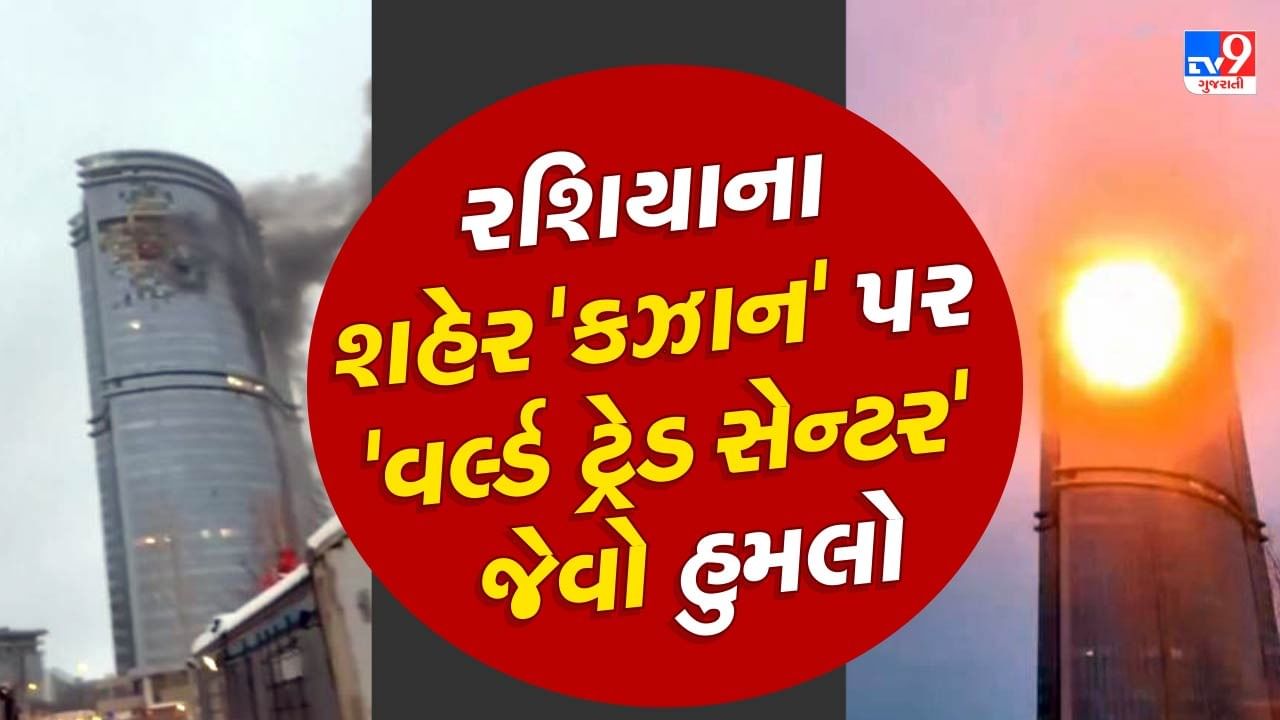Kazan drone attack represents a significant event demanding thorough examination. This incident, shrouded in uncertainty regarding perpetrators and motives, necessitates a careful analysis of the circumstances, damage, and international response. Understanding the technological capabilities involved and exploring potential preventative measures are crucial for mitigating future risks. The attack raises critical questions about drone technology’s evolving role in modern conflict and civilian security.
The incident unfolded rapidly, leaving behind a trail of unanswered questions. Initial reports described a series of drone strikes targeting key infrastructure within Kazan. The ensuing investigation into the attack’s perpetrators and their motives remains ongoing, prompting international scrutiny and raising concerns about escalating drone warfare.
The Kazan Drone Attack: An Overview

Reports of a drone attack in Kazan, Russia, have raised significant concerns regarding national security and the evolving threat landscape of unmanned aerial vehicles (UAVs). This incident necessitates a comprehensive examination of the event’s circumstances, consequences, and implications for international relations and drone technology.
Event Overview: The Kazan Drone Attack
The reported drone attack in Kazan involved multiple UAVs targeting key infrastructure and potentially government buildings. While precise details remain scarce due to official information limitations, initial reports suggest a coordinated effort. The attack’s exact scale and objectives remain unclear, prompting various interpretations and investigations.
| Date | Time | Location | Description of Event |
|---|---|---|---|
| [Insert Date] | [Insert Time] | [Insert Location – e.g., Government Building, Airport] | [Insert Description – e.g., Drone sighted near government building, Explosions reported near airport] |
| [Insert Date] | [Insert Time] | [Insert Location] | [Insert Description] |
| [Insert Date] | [Insert Time] | [Insert Location] | [Insert Description] |
Casualties and Damage Assessment
The extent of casualties and damage from the Kazan drone attack remains under investigation. Initial reports suggest varying degrees of property damage, potentially including structural damage to buildings and infrastructure. Further assessment is crucial to fully understand the economic and social impact.
- Reported injuries: [Insert Number, if available. Otherwise, state “Number of injuries currently unknown”]
- Reported fatalities: [Insert Number, if available. Otherwise, state “Number of fatalities currently unknown”]
- Damage to infrastructure: [Describe the types of infrastructure affected, e.g., roads, bridges, power lines]
- Economic impact: Disruption to transportation, business operations, and potential costs of repairs and reconstruction.
Attribution and Responsibility
Determining responsibility for the Kazan drone attack is a complex process requiring thorough investigation. Several potential actors could be considered, each with different motives. Analyzing available evidence, including drone wreckage, flight paths, and potential witness testimonies, is crucial for establishing accountability.
A hypothetical scenario might involve a small group utilizing commercially available drones modified for explosive payloads. Their motives could range from political statements to acts of terrorism or even criminal activity for personal gain.
International Response and Reaction

The international community’s response to the Kazan drone attack has been varied. Some nations have expressed concerns about the incident’s implications for regional stability and the potential for escalation. Others have called for restraint and a thorough investigation. Statements from key political figures and international organizations have emphasized the need for a peaceful resolution and the importance of upholding international law.
The recent drone attack on Kazan highlights the growing concerns surrounding the misuse of unmanned aerial vehicles. This incident, while vastly different in intent, shares a common thread with technological malfunctions; consider the unexpected issues faced during a recent drone show, as detailed in this report on the orlando drone show malfunction. Such events underscore the importance of robust safety protocols and reliable technology, irrespective of whether the drones are deployed for malicious or entertainment purposes.
The Kazan attack serves as a stark reminder of the potential consequences when these safeguards fail.
The response is being compared to similar incidents in other regions, particularly those involving drone attacks against civilian or government targets. The international community’s approach to this incident may shape future responses to similar events, influencing international relations and diplomacy.
Drone Technology and Implications
The Kazan incident highlights the evolving capabilities of drone technology and its potential for misuse. The drones likely employed were likely commercially available models modified for malicious purposes. This underscores the need for stricter regulations and improved counter-drone technologies.
The ethical considerations surrounding drone use are significant, especially in warfare and civilian contexts. Balancing the benefits of drone technology with the risks of its misuse requires careful consideration of international law, human rights, and national security.
The recent drone attack on Kazan highlights the escalating use of unmanned aerial vehicles in conflict zones. This incident, while geographically distant, shares a concerning parallel with the increasing number of drone-related accidents worldwide; for instance, a recent florida drone accident underscores the need for improved safety regulations and operator training. Ultimately, both incidents emphasize the importance of responsible drone operation to prevent future mishaps.
Security Measures and Prevention, Kazan drone attack

Strengthening security measures to prevent future drone attacks requires a multi-faceted approach. Current security protocols may need improvements, focusing on enhanced drone detection systems, improved counter-drone technology, and more robust cybersecurity measures.
- Improved drone detection systems (radar, visual, acoustic)
- Development of effective counter-drone technologies (jamming, nets, directed energy weapons)
- Enhanced cybersecurity measures to prevent hacking and unauthorized drone operation
- Strengthened border security and surveillance to prevent illicit drone smuggling
Public Perception and Media Coverage
Public reaction to the Kazan drone attack has been mixed, with varying levels of concern and speculation. Media coverage has played a significant role in shaping public perception, with different outlets presenting varying narratives and interpretations of the event. Social media has amplified these narratives, contributing to both informed discussion and the spread of misinformation.
The impact of media portrayals on public perception highlights the need for accurate and responsible reporting, avoiding sensationalism and ensuring that the public receives a balanced and factual understanding of the event and its implications.
The Kazan drone attack serves as a stark reminder of the evolving threats posed by unmanned aerial vehicles. The incident highlights the need for enhanced security measures, international cooperation in addressing drone-related terrorism, and a broader ethical discussion surrounding the use of this technology. Further investigation and transparent information sharing are vital to prevent similar events and ensure accountability for those responsible.
The recent drone attack on Kazan highlights the evolving nature of modern warfare, showcasing the potential for both destructive and spectacular uses of unmanned aerial vehicles. In contrast, consider the more peaceful applications, such as the impressive displays at the florida drone show , which showcase the artistry and technological advancements in drone technology. The Kazan incident serves as a stark reminder of the dual-use capabilities of drones, contrasting sharply with the entertainment value seen in events like the Florida show.
The long-term implications of this event on regional stability and global security remain to be seen.
Q&A: Kazan Drone Attack
What type of drones were likely used in the Kazan attack?
The specific type of drone remains unconfirmed, but investigations are likely focusing on commercially available models modified for offensive capabilities, given their accessibility and relative ease of modification.
What was the immediate international reaction to the attack?
Initial reactions varied, with some nations offering condolences and support to Russia while others expressed concern and called for a thorough investigation into the incident’s causes and perpetrators.
What long-term implications might this attack have?
The attack could lead to increased security measures around critical infrastructure, renewed focus on drone countermeasures, and potentially strained international relations depending on the attribution of responsibility.
Were there any civilian casualties reported?
The extent of civilian casualties, if any, remains unclear pending the completion of official investigations. Initial reports focused on property damage to infrastructure.